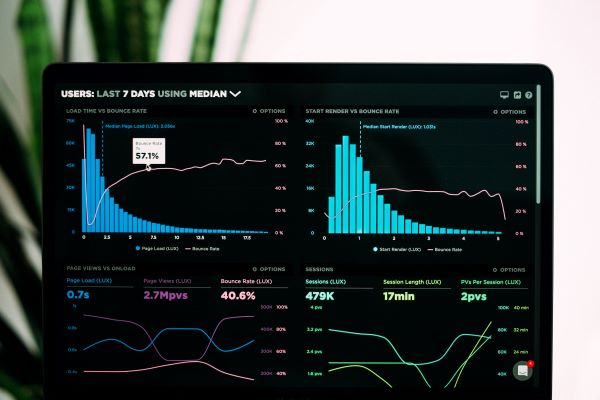
Monitor Website Changes for Improved SEO

As a website owner or SEO professional, you know how crucial it is to keep your website up-to-date and ensure it ranks high on search engines. Search engines continuously update their algorithms and consider various factors to determine the relevance and quality of your website's content. Therefore, tracking website changes is an essential part of maintaining your website's SEO performance.
However, manually tracking changes to your website can be a daunting task, especially if you have a large website with numerous pages. This is where web monitoring tools come in handy, making it easy to track changes and respond swiftly to maintain or improve your SEO ranking.
In this article, we'll delve into why tracking website changes is important for SEO and how web monitoring tools help you achieve this.
The Importance of Tracking Website Changes for SEO
Tracking website changes is essential for maintaining and improving your website's SEO performance. As search engines continuously update their algorithms, it's critical to ensure that your website's content is up-to-date and relevant to your target audience. If your website contains outdated information or irrelevant content, your website's search engine ranking will decrease, resulting in a loss of traffic, leads, and revenue.
Moreover, tracking website changes helps you identify and fix technical issues on your website that may affect its performance, such as broken links, page errors, and slow loading times. These issues can lead to a poor user experience, affecting your website's bounce rate and ultimately lowering your search engine ranking.
Overall, tracking website changes helps you maintain a high level of quality on your website, improve user experience, and stay ahead of your competitors.
Examples of Why Tracking Website Changes is Important for SEO
To understand why tracking website changes is important for SEO, here are some examples:
-
Outdated content: If your website contains outdated content, it may no longer be relevant or accurate. For instance, if you own a tech blog, and you haven't updated your content on new technology trends, your readers may consider your website unreliable, and search engines may lower your ranking.
-
Broken links: Broken links can negatively impact your website's SEO. For example, if you have a link to a third-party website, and the page no longer exists, search engines may consider it a broken link and penalize your website's ranking.
-
Duplicate content: Having duplicate content on your website can lead to confusion among users and search engines. If search engines find duplicate content on your website, they may not know which page to rank higher, which can affect your website's ranking.
How Web Monitoring Tools Help Track SEO Changes on Your Website

Tracking website changes is essential for maintaining and improving your website's SEO performance. It helps you ensure that your website's content is up-to-date and relevant, identify and fix technical issues, and stay ahead of your competitors. By using web monitoring tools, you can track changes automatically and respond swiftly, leading to improved SEO rankings, traffic, leads, and revenue.
Web monitoring tools are designed to help you track changes to your website automatically. These tools continuously scan your website's pages, detect modifications, and alert you of any changes that could affect your SEO performance.
In this section, we'll explain how web monitoring tools work, the different types of monitoring available, and how they can help you track SEO changes on your website.
How Web Monitoring Tools Work
Web monitoring tools work by automatically scanning your website's pages and checking for any changes. They use various techniques to identify and track changes, including web crawling and code monitoring.
Web crawling involves visiting your website's pages and analyzing the HTML code to identify changes in content, links, and tags. Code monitoring, on the other hand, involves checking the code behind your website to detect changes in the underlying structure, such as page speed, server errors, and broken links.
Once changes are detected, web monitoring tools send alerts to your email, SMS, or a dashboard, allowing you to review the changes and take appropriate action.
Types of Monitoring Available
Web monitoring tools offer various types of monitoring, each designed to track specific elements that affect your website's SEO. Here are the most common types of monitoring available:
-
Uptime Monitoring: This type of monitoring tracks your website's availability and alerts you of any downtime or server errors.
-
Performance Monitoring: This type of monitoring tracks your website's speed, load time, and responsiveness, allowing you to identify and fix performance issues that may affect your SEO.
-
Security Monitoring: This type of monitoring tracks your website's security, including malware, virus, and hacking attempts, allowing you to respond promptly to protect your website and your visitors.
How Web Monitoring Tools Help Track SEO Changes
Web monitoring tools help you track SEO changes by automatically detecting modifications to your website and alerting you of any changes that could impact your SEO ranking. For instance, if your website experiences downtime or server errors, your web monitoring tool will send you an alert, allowing you to respond quickly and minimize the impact on your SEO performance.
Moreover, web monitoring tools help you track changes to your website's content, links, and tags, allowing you to identify and fix issues that could affect your SEO. For example, if you notice a sudden drop in traffic, you can use your web monitoring tool to identify changes to your website's content or links that may have caused the decrease.
By using web monitoring tools, you can stay on top of your website's changes, improve your SEO performance, and ensure a positive user experience for your visitors.
Web monitoring tools help you track SEO changes on your website by automatically detecting modifications and alerting you of any changes that could impact your SEO performance. These tools offer various types of monitoring, including uptime monitoring, performance monitoring, and security monitoring, allowing you to stay informed and act swiftly. By using web monitoring tools, you can improve your website's SEO ranking, attract more traffic, and increase your revenue.
How Web Monitoring Helps You Maintain a High Level of Quality on Your Website
Web monitoring is essential for maintaining a high level of quality on your website. By using web monitoring tools, you can identify and fix technical issues, track changes to your website's content, and ensure a positive user experience for your visitors.
In this section, we'll explain how web monitoring helps you maintain a high level of quality on your website, the benefits of using web monitoring tools, and best practices for effective web monitoring.
Maintaining a High Level of Quality on Your Website
Maintaining a high level of quality on your website is critical for attracting visitors, keeping them engaged, and improving your SEO ranking. By using web monitoring tools, you can ensure that your website meets the following criteria:
-
Relevance: Your website's content should be relevant to your target audience and provide value to them.
-
Accuracy: Your website's content should be accurate and up-to-date, reflecting the latest information in your industry.
-
Performance: Your website should perform well, with fast loading times, responsive design, and easy navigation.
-
Security: Your website should be secure, protecting your visitors' data and preventing cyber threats.
Benefits of Using Web Monitoring Tools
Using web monitoring tools offers various benefits, including:
-
Improved SEO ranking: By maintaining a high level of quality on your website, you can improve your SEO ranking and attract more traffic to your website.
-
Reduced downtime: By monitoring your website's uptime, you can respond promptly to any downtime or server errors, minimizing the impact on your visitors and your SEO ranking.
-
Improved user experience: By monitoring your website's performance and security, you can ensure a positive user experience for your visitors, increasing engagement and reducing bounce rates.
Best Practices for Effective Web Monitoring
To ensure effective web monitoring, consider the following best practices:
-
Choose the right web monitoring tool for your needs, considering the features, pricing, and support offered by different providers.
-
Configure the tool's settings to monitor specific pages or your entire site, and choose the monitoring frequency that suits your needs.
-
Interpret web monitoring data carefully and take appropriate action to address any issues detected.
-
Collaborate with your team members to ensure effective communication and swift action when issues arise.
Web monitoring is essential for maintaining a high level of quality on your website, improving your SEO ranking, and ensuring a positive user experience for your visitors. By using web monitoring tools, you can identify and fix technical issues, track changes to your website's content, and stay ahead of your competitors. Best practices for effective web monitoring include choosing the right tool, configuring settings appropriately, interpreting data carefully, and collaborating with your team members. Don't miss out on the benefits of effective web monitoring - start monitoring your site today!